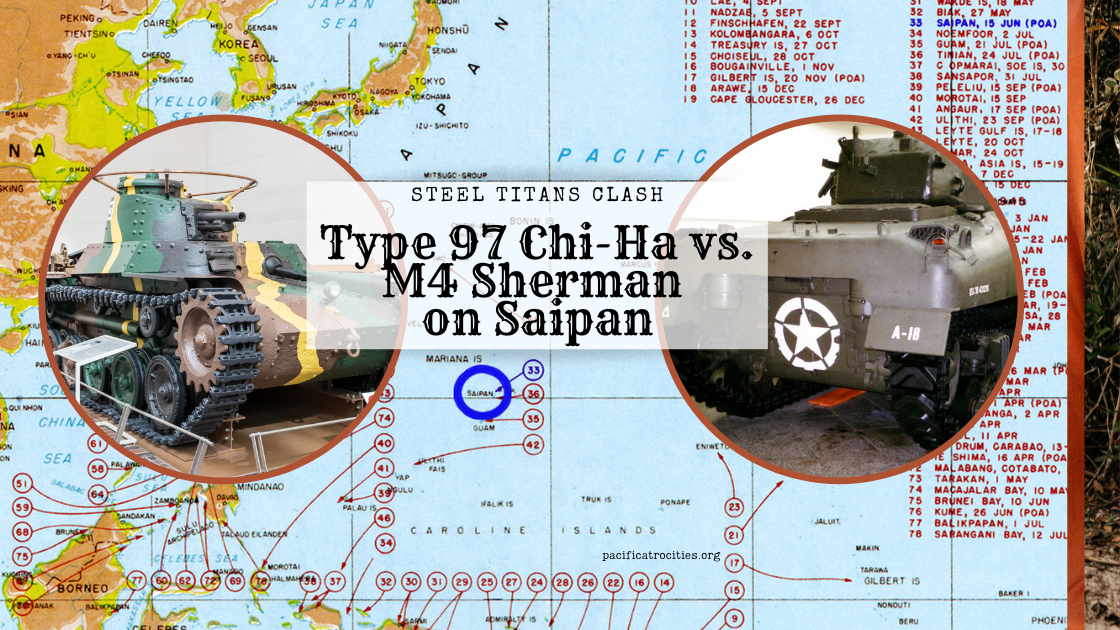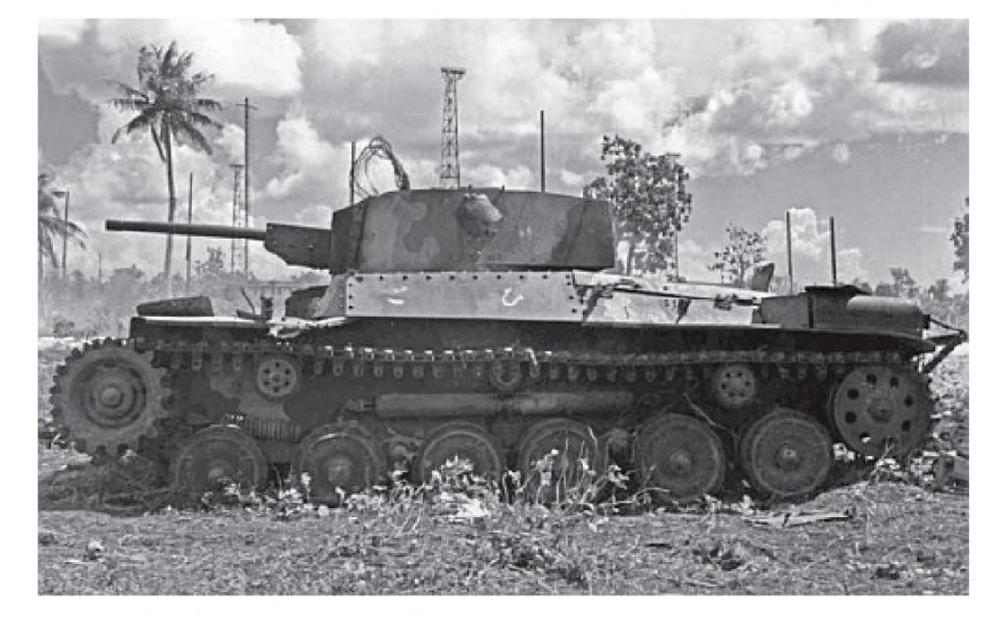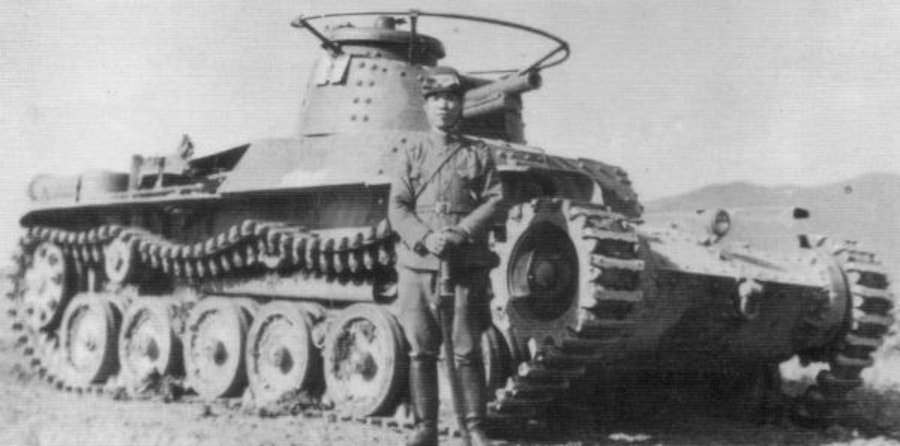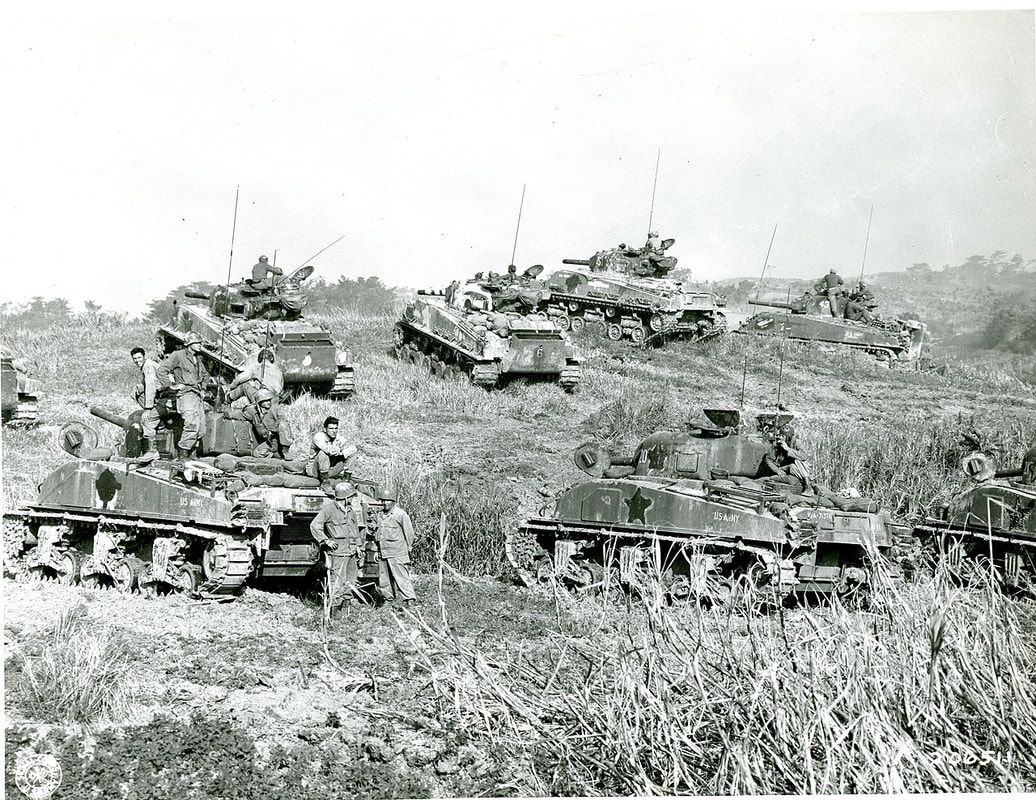|
by Jenny Chan The Type 97 Chi-Ha was a medium tank developed by the Imperial Japanese Army in the late 1930s, and it played a significant role in Japan's armored warfare strategies during the Second Sino-Japanese War and World War II. Its development, operational history, and impact on the battlefield provide a fascinating insight into the evolution of armored warfare in the Asia-Pacific region. Development and Design The Type 97 Chi-Ha was developed as a successor to the earlier Type 89 I-Go, which was deemed insufficient against emerging foreign tank designs. Designed by Mitsubishi Heavy Industries, the Type 97 aimed to balance firepower, mobility, and protection within the technological and industrial constraints faced by Japan at the time. The tank was equipped with a 57mm main gun, which was adequate against contemporary armored threats when it was first introduced. However, as the war progressed, this armament became increasingly obsolete against allied armor, leading to the development of the Shinhoto Chi-Ha, which featured an upgraded 47mm high-velocity gun in a new turret. The armor of the Type 97 was relatively thin, reflecting the Japanese doctrinal emphasis on speed and maneuverability over direct engagement with enemy tanks. It featured a diesel engine, which was somewhat unusual for the time, providing a good balance of power, reliability, and range. [1] Specifications:
Combat History: The Type 97 saw extensive service across various theaters of the Second Sino-Japanese War and World War II, from the vast plains of China to the jungles of Southeast Asia and the Pacific islands. Its initial engagements in China demonstrated its superiority over Chinese and Soviet-supplied tanks. However, these successes were somewhat misleading, as the tank's limitations were not fully exposed against the poorly equipped Chinese forces. As the Pacific War escalated, the Type 97 encountered more formidable opponents, such as the British Matilda and American M4 Sherman tanks. In these contexts, the Type 97's weaknesses in armor and firepower became glaringly apparent. Despite these disadvantages, Japanese crews often used their tanks in innovative ways, leveraging the terrain and employing ambush tactics to offset their technological shortcomings.
While the Type 97 Chi-Ha was involved in these early-war campaigns and achieved success against less heavily armed opponents, its limitations became more apparent as the war progressed. The tank struggled against the better-armored and armed tanks fielded by the Allies in the later stages of World War II, as was apparent during the Battle of Saipan. One of the notable battles where the Type 97 Chi-Ha was used against American forces was the Battle of Saipan, which took place from June 15 to July 9, 1944, during the Pacific Campaign of World War II. The battle was a critical part of the American "island-hopping" strategy aimed at capturing key islands in the Pacific and moving closer to Japan. Background Saipan, part of the Mariana Islands, was a strategic location due to its airfields and position, allowing air raids on the Japanese mainland. The Japanese garrison on Saipan included several armored units equipped with Type 97 Chi-Ha tanks, among other assets. These tanks were intended to bolster the island's defenses against the anticipated American invasion. The BattleThe American invasion began with a massive pre-landing bombardment, followed by amphibious landings on Saipan's west coast. The U.S. forces faced fierce resistance from the entrenched Japanese defenders, who utilized the rugged terrain and caves and prepared positions to their advantage. Japanese armor, including the Type 97 Chi-Ha tanks, was used in counterattacks against the American beachheads and advancing troops. One notable engagement involving the Type 97 tanks occurred in the vicinity of Aslito Airfield (later renamed Isely Field by the Americans), where the tanks supported infantry assaults against American positions.[3] Challenges Faced by the Type 97 Chi-HaThe Type 97 Chi-Ha tanks were at a significant disadvantage against the superior firepower and armor of the American M4 Sherman tanks and tank destroyers. The 57mm main gun of the Type 97 was largely ineffective against the frontal armor of the Sherman, requiring the Japanese to attempt flanking maneuvers or close-range ambushes to achieve any success. Moreover, the open terrain of Saipan, unlike the jungles of Southeast Asia or the islands' dense forests, offered little cover for the Japanese tanks, making them vulnerable to anti-tank weapons, artillery, and air strikes. American air superiority further compounded the difficulties faced by Japanese armored units, limiting their mobility and effectiveness. Outcome Despite their valiant efforts, the Japanese counterattacks, including those involving Type 97 Chi-Ha tanks, were ultimately unsuccessful in repelling the American invasion. The battle resulted in a decisive American victory, with the capture of Saipan enabling air raids on the Japanese mainland and significantly contributing to the eventual Allied victory in the Pacific. The use of Type 97 Chi-Ha tanks at Saipan exemplifies the challenges faced by Japanese armored forces when confronting technologically superior American tanks and combined arms tactics. It also highlights the limitations of the Type 97 Chi-Ha in direct tank engagements, underscoring the broader issues of Japanese tank design and doctrine during World War II. [4] Impact and Legacy
The impact of Type 97 Chi-Ha on the battlefield was a mixed affair. While it initially provided the Japanese Imperial Army with a mobile and versatile armored platform, its effectiveness waned as allied technological advancements outpaced Japanese industrial capabilities. The tank's legacy is thus a testament to the challenges faced by Japan in maintaining parity with its adversaries in the arms race of World War II. Moreover, the Type 97 Chi-Ha holds a significant place in military history as a symbol of Japan's armored warfare efforts. It was the most widely produced Japanese medium tank of the era, serving in various capacities throughout the war and even continuing in limited service post-war under different flags. In conclusion, the Type 97 Chi-Ha represents a critical chapter in the history of armored warfare. Its development reflects the strategic priorities and industrial limitations of Japan in the lead-up to World War II, while its operational history underscores the dynamic nature of technological evolution in the context of global conflict. Despite its shortcomings, the Type 97 Chi-Ha remains an iconic vehicle, embodying the complexities of war and the relentless pursuit of advancement in military technology. [1] "兵器臨時定価、予価、表送付の件 Military catalogue of the Japanese military". National Archives of Japan. Ministry of the Army. [2] Military History Fandom, "Type 97 Chi-Ha," last modified date (if available), accessed [February 14, 2024], https://military-history.fandom.com/wiki/Type_97_Chi-Ha. [3] "Saipan 1944," Mike's Research, June 27, 2021, https://mikesresearch.com/2021/06/27/saipan-1944/. [4] Steven J. Zaloga, M4 Sherman vs Type 97 Chi-Ha: The Pacific 1945 (Osprey Publishing, 2013), https://www.ospreypublishing.com/us/m4-sherman-vs-type-97-chiha-9781780964225/
0 Comments
Leave a Reply. |
- Home
- Stories
-
Internship
- Summer 2024 Internship
- Summer 2023 Internship
- Fall 2022 Internship
- Summer 2022 Internship
- Summer 2021 Internship
- Fall 2020- Spring 2021 Internship
- Summer 2020 Internship
- Fall 2019 Internship
- Summer 2019 Internship >
- School Year 2018-2019 Internship
- Summer 2018 Internship >
- Fall 2017 Internship
- Summer 2017 Internship >
- Books
- Archives
-
Resource Page
-
Supplementary Research Guides
>
- Unit 731 - Guide >
-
Philippines' Resistance - Guide
>
- Philippines World War II Timeline
- The Japanese Invasion & Conquest of the Philippines
- Bataan Death March
- Formation of Underground Philippines Resistance
- Supplies of the Guerrilla Fighters
- The Hukbalahap
- Hunter's ROTC
- Marking's Guerrillas
- United States Army Forces in the Philippines of Northern Luzon (USAFIP-NL)
- The Aetas
- Chinese and Filipino-Chinese Nationalist Guerrilla Units
- The Female Faces of the Philippine Guerrillas
- Rising Sun Flag - Guide >
- Pinay Guerrilleras - Guide >
- Fall of Singapore - Guide >
- Three Years and Eight Months - Guide >
- Siamese Sovereignty - Guide >
- The Khabarovsk War Crimes Trial - Guide >
- Unit 731 Cover-up : The Operation Paperclip of the East - Guide >
- Marutas of Unit 731 - Guide >
- Prince Konoe Memoir - Guide >
- Competing Empires in Burma - Guide >
- Battle of Shanghai - Guide >
- Ishi Shiro - Guide >
- Taiwan The Israel of the East - Guide >
- Seeking Justice for Biological Warfare Victims of Unit 731 - Guide >
- Rice and Revolution - Guide >
- Clash of Empires - Guide >
-
Hunger for Power and Self-SufficiencyI - Guide
>
- The Influence of War Rations on Post-War Culinary Transformations
- How World War II Complicated Food Scarcity and Invention
- American Military Innovations
- Government-Sponsored Food Inventions in Europe during World War II
- Feeding the Army: The Adaptation of Japanese Military Cuisine and Its Impact on the Philippines
- Mixed Dishes: Culinary Innovations Driven by Necessity and Food Scarcity
-
Denial A Quick Look of History of Comfort Women and Present Days’ Complication - Guide
>
- The Comfort Women System and the Fight for Recognition
- The Role of Activism and International Pressure
- The Controversy over Japanese History Textbooks
- The Sonyŏsang Statue and the Symbolism of Public Memorials
- Activism and Support from Japanese Citizens
- The Future of Comfort Women Memorials and Education
- Echoes of Empire: The Power of Japanese Propaganda - Guide >
- Lesson Plans >
-
Supplementary Research Guides
>
|
Pacific Atrocities Education
730 Commercial Street San Francisco, CA 94108 415-988-9889 |
Copyright © 2021 Pacific Atrocities Education.
We are a registered 501 (c)(3) charity. |
- Home
- Stories
-
Internship
- Summer 2024 Internship
- Summer 2023 Internship
- Fall 2022 Internship
- Summer 2022 Internship
- Summer 2021 Internship
- Fall 2020- Spring 2021 Internship
- Summer 2020 Internship
- Fall 2019 Internship
- Summer 2019 Internship >
- School Year 2018-2019 Internship
- Summer 2018 Internship >
- Fall 2017 Internship
- Summer 2017 Internship >
- Books
- Archives
-
Resource Page
-
Supplementary Research Guides
>
- Unit 731 - Guide >
-
Philippines' Resistance - Guide
>
- Philippines World War II Timeline
- The Japanese Invasion & Conquest of the Philippines
- Bataan Death March
- Formation of Underground Philippines Resistance
- Supplies of the Guerrilla Fighters
- The Hukbalahap
- Hunter's ROTC
- Marking's Guerrillas
- United States Army Forces in the Philippines of Northern Luzon (USAFIP-NL)
- The Aetas
- Chinese and Filipino-Chinese Nationalist Guerrilla Units
- The Female Faces of the Philippine Guerrillas
- Rising Sun Flag - Guide >
- Pinay Guerrilleras - Guide >
- Fall of Singapore - Guide >
- Three Years and Eight Months - Guide >
- Siamese Sovereignty - Guide >
- The Khabarovsk War Crimes Trial - Guide >
- Unit 731 Cover-up : The Operation Paperclip of the East - Guide >
- Marutas of Unit 731 - Guide >
- Prince Konoe Memoir - Guide >
- Competing Empires in Burma - Guide >
- Battle of Shanghai - Guide >
- Ishi Shiro - Guide >
- Taiwan The Israel of the East - Guide >
- Seeking Justice for Biological Warfare Victims of Unit 731 - Guide >
- Rice and Revolution - Guide >
- Clash of Empires - Guide >
-
Hunger for Power and Self-SufficiencyI - Guide
>
- The Influence of War Rations on Post-War Culinary Transformations
- How World War II Complicated Food Scarcity and Invention
- American Military Innovations
- Government-Sponsored Food Inventions in Europe during World War II
- Feeding the Army: The Adaptation of Japanese Military Cuisine and Its Impact on the Philippines
- Mixed Dishes: Culinary Innovations Driven by Necessity and Food Scarcity
-
Denial A Quick Look of History of Comfort Women and Present Days’ Complication - Guide
>
- The Comfort Women System and the Fight for Recognition
- The Role of Activism and International Pressure
- The Controversy over Japanese History Textbooks
- The Sonyŏsang Statue and the Symbolism of Public Memorials
- Activism and Support from Japanese Citizens
- The Future of Comfort Women Memorials and Education
- Echoes of Empire: The Power of Japanese Propaganda - Guide >
- Lesson Plans >
-
Supplementary Research Guides
>



